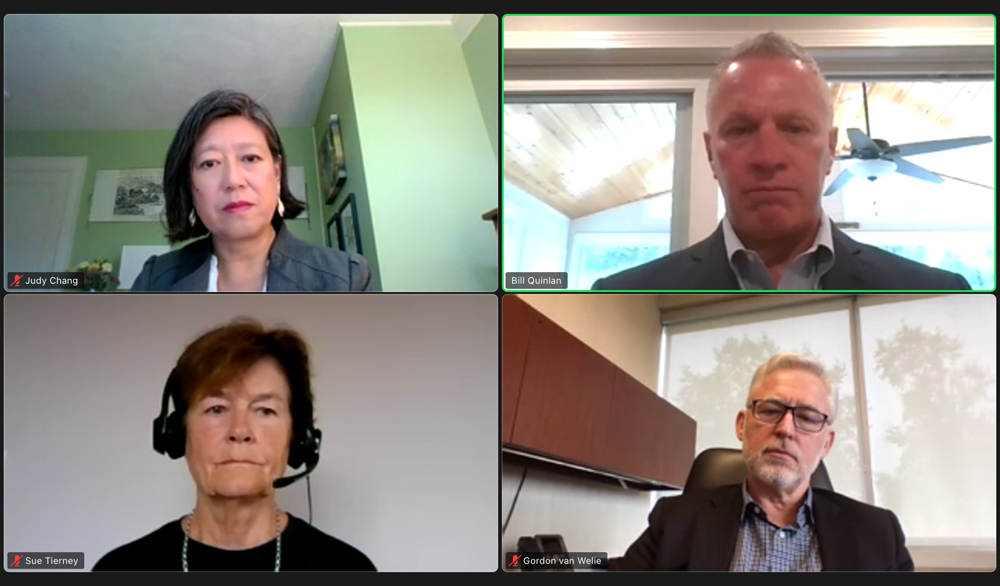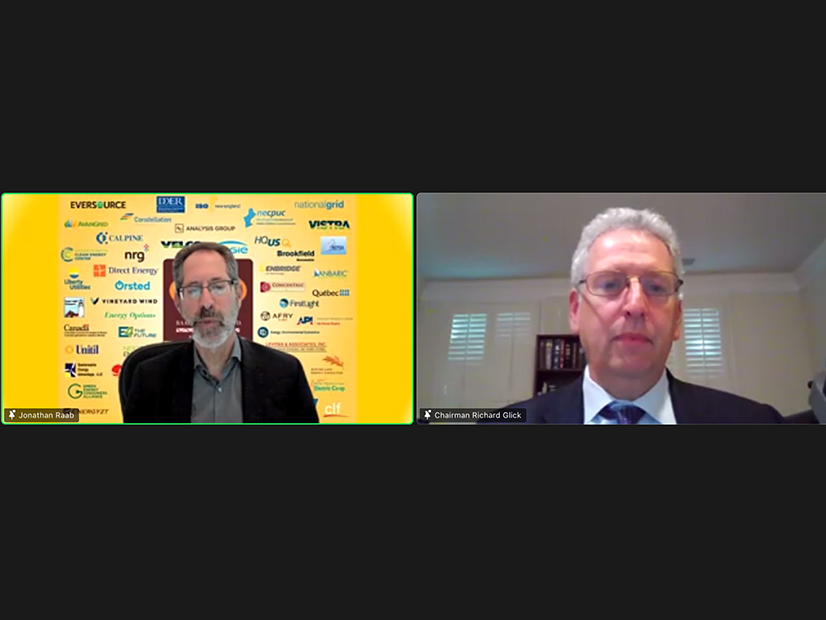FERC Chair Richard Glick said that when he looks at the interconnection queues across the U.S., it amazes him how clear the direction is in terms of the resource mix: More than 90% of generation are renewable projects, “and that says a lot.”
“I think people realize that if you’re going to have that much intermittent renewable resources, there are some issues that need to be addressed,” Glick said in delivering a keynote at Raab Associates’ 171st New England Electricity Restructuring Roundtable.
Glick said the U.S. needs “a significant build out” of the transmission grid to access renewable resources far from load centers. “It’s an enormous task, not just in terms of finding companies that are willing to invest in these projects and providing the right incentives.” Between siting, permitting, construction and operation, it takes a lot of time. “We need to take that into account.”
Glick acknowledged that FERC has “significant” but not “complete” authority of the grid. However, in dealing with public policy transmission projects, Glick said the current paradigm is not “sufficient.”
In July, FERC announced an Advanced Notice of Proposed Rulemaking (RM21-17) to reconsider its rules on transmission planning, cost allocation and generator interconnection, acknowledging that Order 1000 has failed to provide interregional expansions to deliver increased renewables and meet the challenge of climate change. (See FERC Goes Back to the Drawing Board on Tx Planning, Cost Allocation.)
Glick said cost allocation is “a huge impediment” toward greater investment and development. He also surmised that tens, if not hundreds, of billions of dollars, are needed for transmission, “and people that invest that money are going to want to recover it.”
“That means consumers are going to have to pay for it somewhere, and I think that’s one of the areas from a FERC perspective that I’d like to focus on a little bit more,” Glick said. “How can we make sure that the transmission that is needed — that the investments that are made are truly the most efficient investments — that consumers get the biggest bang for their buck? That’s going to be the dominant issue as we move forward, whether it be at the state level or the federal level.”
Improving Tx Planning, Investment and Siting
Following Glick’s keynote, four panelists from the RTO, state, utility and consultant spaces drilled down deeper on improving transmission planning, investment and siting in New England.
“We are pivoting from a time when we really wanted to use transmission to support markets and economic efficiency — as well as reliability, of course — toward a … new objective function of decarbonization targets,” said Sue Tierney, senior adviser at Analysis Group. “We need robust scenario planning approaches. The states’ energy and electricity requirements need to be at the center of these scenarios. We need to look at multiple pathways [to decarbonization] and analyze transmission needs that come out robustly to support a variety of different scenario pathways.”

The existing planning process needs improvement, conceded Bill Quinlan, president of transmission and offshore wind projects for Eversource Energy. Still, it did produce “a very reliable, efficient grid for New England.”
“Whether it’s eliminating congestion down in southwest Connecticut, opening up interstate power flows, allowing fossil plants to retire, there’s a lot of goodness that has come out of the reliability-based planning that has taken place over a decade,” Quinlan said. “We do need to open up the planning process and create a new planning framework that allows the region to achieve its clean energy goals.”
Judy Chang, undersecretary of Energy and Climate Solutions in the Massachusetts Executive Office of Energy and Environmental Affairs, said that any new planning processes are not going to be perfect “the first time.”
“It takes several iterations to get it right, not that there is a final answer or anything,” Chang said. “But I think we improve as we do this, so we have to do this quickly, the first time acknowledging that we may not get every scenario right, and every assumption right, or even the stories behind each scenario quite right; or might not have satisfied everybody’s curiosity and input. This is difficult for the [RTO], but we have to strike a balance. We have to take into account the input, but we also have to do it quickly, knowing that we’ll have another chance to come back and refine.”
ISO-NE CEO Gordon van Welie said there is plenty of renewable energy potential in New England, “more than enough to support what we need for decarbonization.”
“I think there are limits to how much consensus we can expect in the stakeholder process. We have to recognize transmission investments tilt the playing field, and so that’s going to limit how much consensus can be achieved in the stakeholder process,” van Welie said. “The most important consensus we need is amongst the New England states because if we don’t get consensus amongst the states, we won’t make progress. I think our history shows that, and so that’s really the vital ingredient to this.”
Historically, when the states are aligned, Quinlan said, “solutions become a reality.”
“Stakeholder engagement, I think that’s key; everyone really does need to have a voice in this, but directionally, I don’t think there’s a big difference of opinion as to what the future should look like,” Quinlan said.



